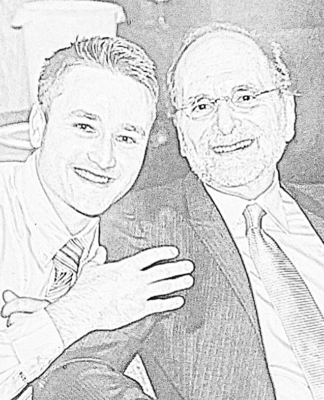This article is geared towards Intensive Short-Term Dynamic Psychotherapy (ISTDP) informed psychotherapists. Case material is strictly hypothetical, examples of interventions are generic, and reading this article is not a substitute for receiving professional supervision and consultation
The term ‘crystallizing’ in ISTDP refers to defenses coming together in unison and forming a resistance, a wall between patient and therapist that jeopardizes therapeutic progress. The usage of the term ‘crystallizing’ that I will discuss in this text is different and is not how Davanloo used the term, though the therapeutic stance and ways of intervening that I will describe are very much inspired by Davanloo’s work.
Referring to an unorthodox and unique usage of the concept ‘crystallization,’ a former close student of Dr. Davanloo said, “Davanloo never taught crystallizing per se even though it was woven throughout his interactions with his clients” (M. Skorman, personal communication, April 6th, 2019). Mr. Skorman is not referring to the crystallization of resistance in the transference which Davanloo obviously taught, but instead a broader concept unique to Mr. Skorman’s adaptation of Davanloo’s ISTDP.
This broad and unorthodox meaning of the term often involves what Davanloo refers to as “cognitive recapitulation and consolidation,” but as this text will make clear, ‘crystallization’ in this sense goes beyond those meanings.
Crystallizing in the context of Mr. Skorman’s reference consists of summarizing and feeding back to the patient the essence of what they are saying and doing, allowing the patient to edit and correct our summaries along the way. It’s a way of organizing the material that the patient shares and the themes that stand out in the patient’s life into core umbrella categories and headlines that begin to structure the session and orient the patient towards self-understanding and towards the therapeutic task.
The act of crystallizing anchors a therapeutic intervention to a context that makes sense to the patient. When a therapist conducts a psychotherapy session that lacks crystallization, the patient does not understand why the therapist’s observations are important. In this scenario, the therapist is offering disjointed factoids and observations that lack relevance to the patient.
Crystallizing is what the therapist does to bring the patient along with the therapist, to ensure therapist and patient are on the same page, to bring the dynamic patterns in operation in and outside the therapist’s office into bold relief, and to create a clear focus so that the patient can make sense of his or her experiences.
One way of understanding this way of using the term crystallizing is that when executed well, all ISTDP informed interventions are crystallizing. The head-on collision, making links on the triangle of person and putting the patient on the triangle of conflict, ought to condense, focus, and contextualize information in ways that help the patient understand the situation they are in, the likely consequences of not changing, and options moving forward.
Crystallizing occurs throughout the entire course of treatment and serves different functions throughout. At some stages of treatment, it is not uncommon that crystallizing serves the function of shoring up the conscious therapeutic alliance, and in other stages of treatment, crystallizing may focus more heavily on boosting the unconscious therapeutic alliance. At times crystallizing serves multiple functions at once.
For example, a hypothetical patient who struggles with loneliness and depressive episodes is conflicted about emotional intimacy, and he withdraws and cuts himself off from his girlfriend every time she tries to get close to him. Helping this patient see that though this behavior may have been adaptive at some point, in its current form it seems to deprive him of more satisfying relational possibilities and leave him lonely and depressed.
For the therapist to highlight this pattern so that the patient can see this not only helps the patient learn something about himself, but it also sets the stage for helping the patient when complex feelings get triggered in the session and the patient mobilizes resistance in the here-and-now with the therapist – now the therapist can now point out that just as the patient avoids the clear and direct experience of his emotions with his girlfriend by depriving himself of what is possible with her, so too the patient is now also depriving himself of reaching his therapeutic goals with the therapist.
In this scenario, crystallizing could sound like, “So we see that you’re emotionally charged in here but instead of clearly experiencing your feelings here with me, you withdraw into yourself and move to this lonely position that you’ve said causes you so much misery. Do you see what I mean? What effect will withdrawing in here have on your therapy, your loneliness and depressive episodes? Isn’t this what you do with your girlfriend as well? She irritates you and you move to isolation, withdrawal, and now the same behaviors here with me as well. Will this help your therapy or hurt your therapy?”
Here the therapist is framing what is occurring under the umbrella category of self-punitive and self-defeating ways in which the patient avoids his feelings. Though several different interventions take place in this vignette (defense identification, T-C interpretation on the triangle of person, a mini head-on collision), the crystallizing function of this intervention is to anchor in the patient’s awareness that this is how he avoids his feelings and this is how he perpetuates his misery. This context, this headline, is crucial to drive home in order to bring the patient along and avoid a misalliance.
To crystallize and shore up the patient’s will in this scenario, the therapist might say, “Look at how distant you are right now. Is this what brings you here, to get to the bottom of this lonely, withdrawn, emotionally crippling force in your life? Or do you want to leave it alone and go on limping through your life like this? Let’s see what you decide.”
One possibility in response to this scenario is that the patient is undecided and has significant reservations about giving up his behavior of withdrawing and shutting down his emotions. Crystallizing in this case could sound like this, “So you are on the fence with one foot in and one foot out. So we are stuck here until you pick a side, therapy is clearly grinding to a halt. But I am not going anywhere. Take your time.” This intervention crystallizes the reality that therapy cannot progress as long as the patient is on the fence, but it also crystallizes that it is up to the patient to decide what he wants, and the patient is not a victim of a therapist who will abandon him if he doesn’t please the therapist.
The particular approach to a given patient in ISTDP is patient-unique and depends on a number of different factors related to each patient’s ego-adaptive capacity and the particular set of conflicts operating within a given patient. The aforementioned approaches are generic and would only be suitable for very specific patient-presentations. Nothing in ISTDP is arbitrary, but instead, each intervention is a response to a thorough assessment of the patient’s response.
Another form of crystallizing, again using Mr. Skorman’s meaning of the term, consists of boosting feelings that are obvious and near the surface. “It sounds like you hated it when she turned her back to you like that!” This intervention crystallizes the emerging feeling in ways that can assist in the feeling to more fully break through into conscious awareness.
When we crystallize, we are in effect saying to the patient, “Here is the situation we seem to be finding ourselves in.” With every observation and intervention thereafter, we anchor what we say in what the patient has indicated is important to him or her. When crystallizing in this fashion, we ensure that the therapeutic journey is one of togetherness and partnership, we ensure that the endeavor takes place “shoulder to shoulder,” an ingredient that done without will doom any course of treatment.
Those that have seen Dr. Davanloo’s work often testify to the seamless quality of it — his sessions tend to take on a crystal clear focus and one intervention flows from one to another where everything comes together. This is a function of crystallizing in the sense that Mr. Skorman uses the term.
References
Davanloo, H. (1995). Unlocking
the unconscious. West Sussex: John Wiley and Sons.


 I have a passion for practicing ISTDP informed psychotherapy and I enjoy writing about it. For more information and what I do, visit my website: www.johanneskieding.com
I have a passion for practicing ISTDP informed psychotherapy and I enjoy writing about it. For more information and what I do, visit my website: www.johanneskieding.com


















